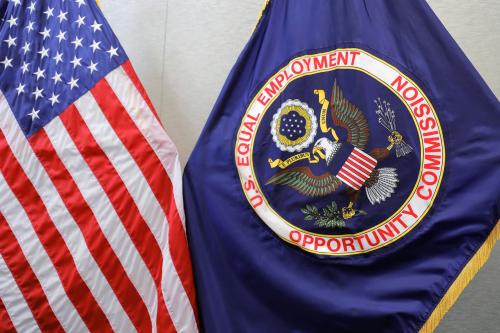The House of Representatives will soon vote on making permanent six temporary tax breaks for business, including the look-thru rule for CFCs (controlled foreign corporations). Although this rule seems like a technical exemption, it allows U.S. multinationals to move a lot of their foreign profits to tax havens and thereby serves as a major deterrent to sensible tax reform.
To understand the importance of this exemption, we need to review the current U.S. tax system for foreign profits of U.S. corporations. Currently, these foreign profits are subject to a 35% U.S. corporate tax, but only if and when they are brought back to the U.S. In that event, the 35% U.S. tax is reduced by a credit for foreign taxes already paid on such foreign profits.
Subpart F of the Internal Revenue Code tries to limit circumventions of the current system by imposing a 35% U.S. tax on certain types of “mobile” foreign profits even if they are not repatriated to the U.S. Most importantly, Subpart F treats investment income and royalties received by foreign subsidiaries of U.S. companies as if these two types of income were earned in the U.S. That’s because it is so easy for multinational companies to move investment income or royalties to a tax haven with a zero tax rate—without actually relocating a business or its facilities.
Responding to business lobbying, however, Congress in 2007 enacted the “temporary” CFC look-thru rule—which exempts royalties and investment income of any foreign subsidiary of a U.S. corporation received from another foreign subsidiary of the same corporation engaged in an active business. In other words, Google would pay no U.S. income taxes under Subpart F on licensing fees or interest payments received by a Google subsidiary set up in a tax haven from a European subsidiary of Google engaged in a real business.
For example, an American tech company could establish a shell corporation in Bermuda to make a large loan to its computer service subsidiary in Germany. The interest payments made on that loan would be tax deductible in Germany, which has a corporate tax rate above 20%. But the interest payments received on that loan would be taxable only in Bermuda, which has a zero corporate tax rate.
Alternatively, an American drug company could license patents from its Bermuda subsidiary to its German subsidiary. The licensing fees paid on those patents would be deductible in Germany, which would reduce its taxes there. But the licensing fees received by its Bermuda subsidiary would be subject to no corporate taxes in Bermuda or in the U.S.
Due to the CFC look-thru rule and other techniques, large U.S. technology-related corporations have generally managed their overall tax rate on their foreign profits down to 7% or 9%. These rates are so low that such U.S. corporations cannot reasonably be expected to repatriate their foreign profits to the U.S. and pay a 35% U.S. tax (minus a foreign tax credit of 7% to 9%).
But there are now several proposals to end the current system of tax deferral and reduce the U.S. tax on foreign profits to 20% or 15%, with credits for foreign taxes already paid to foreign countries. These proposals are quite sensible since the effective marginal rate on corporate profits in advanced industrial countries (excluding the U.S.) on average is approximately 17%.
Under such a proposal with a 17% rate, for instance, if a U.S. corporation paid taxes of 20% on its UK profits, it could repatriate these profits to the U.S. without paying any additional U.S. taxes. The credit for the 20% in taxes paid to the UK would more than offset the 17% U.S. tax rate on foreign profits of U.S. corporations.
On the other hand, if a U.S. corporation paid zero taxes on its Bermuda profits, it would immediately owe U.S. taxes of 17% on such profits. That’s because there would be no foreign tax credit to offset the reduce U.S. tax on these Bermuda profits of the U.S. corporation.
Thus, if Congress wants to set the table for international tax reform, it should NOT make permanent the CFC look-thru exemption. If U.S.-based multinational corporations can move most of their foreign profits to tax havens with a zero corporate tax rate, they will not be willing to accept an intermediate U.S. tax rate such as 17% on foreign profits. In fact, they are advocating for legislative proposals with tax rates on their foreign profits closer to 10%.
Tax reform will require a difficult compromise on a tax rate for foreign profits of U.S. corporations; this compromise should be substantially lower than the current 35% U.S. rate, but in line with the tax rates on corporate income earned in our major trading partners. However, if U.S. multinationals can move most of their foreign profits to tax havens with a zero rate, they will have little incentive to accept a reasonable intermediate tax rate such as 17% on their foreign profits.
The Brookings Institution is committed to quality, independence, and impact.
We are supported by a diverse array of funders. In line with our values and policies, each Brookings publication represents the sole views of its author(s).



Commentary
Op-edHow Tax Havens Complicate the U.S. Corporate Tax
May 27, 2014